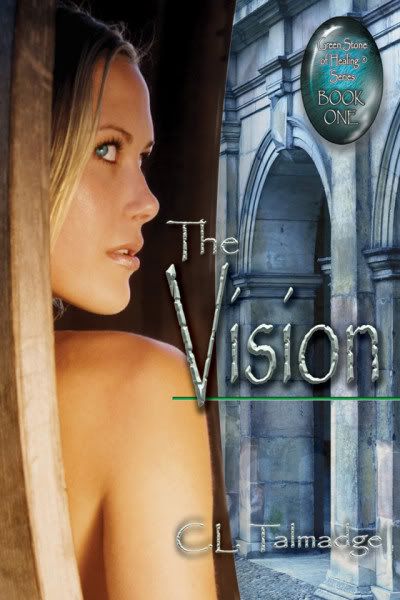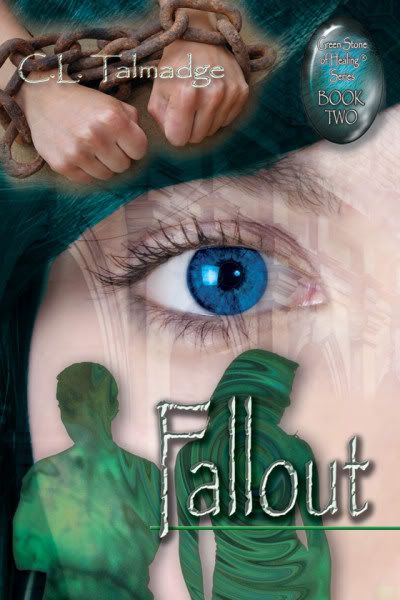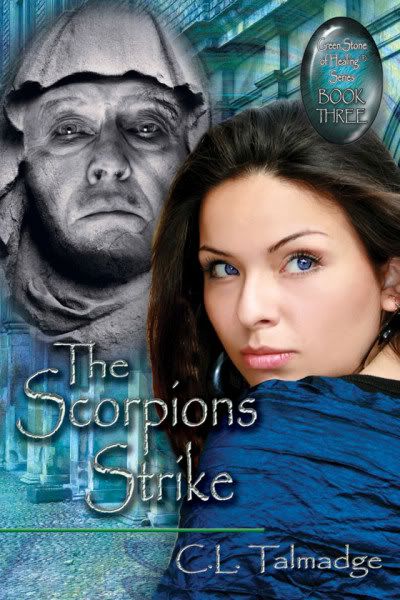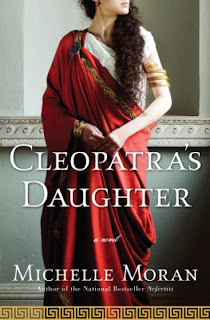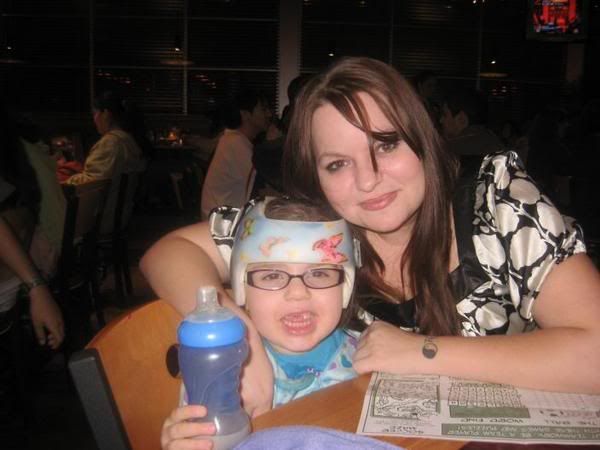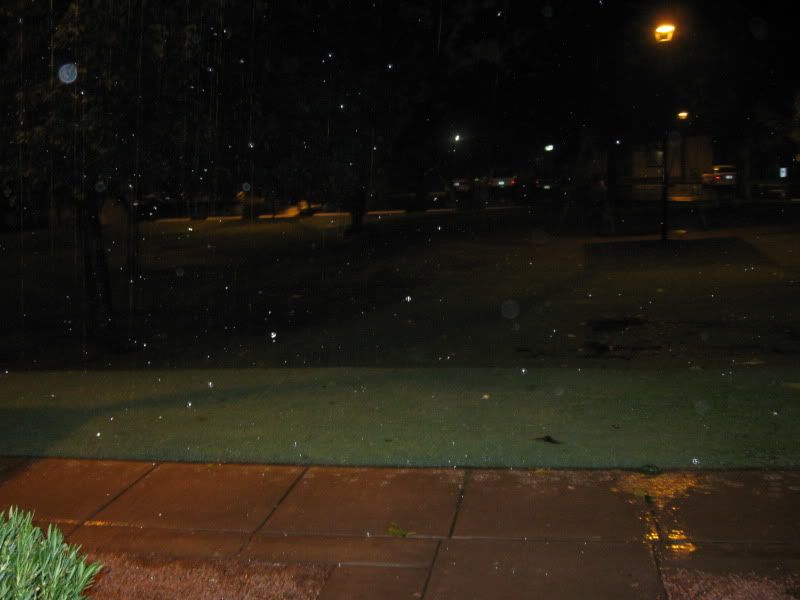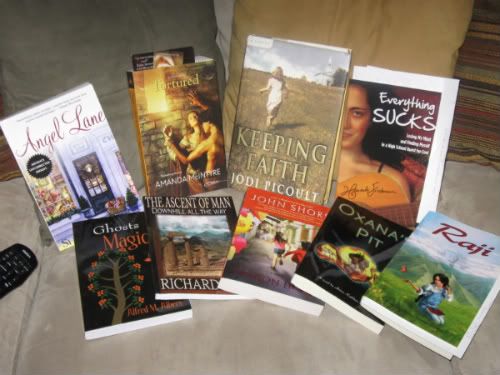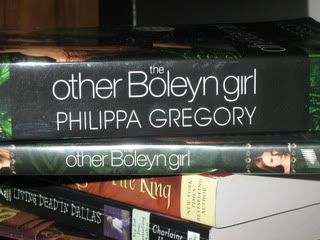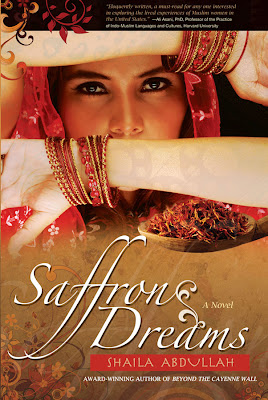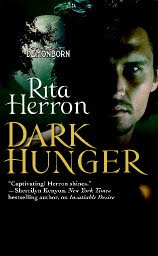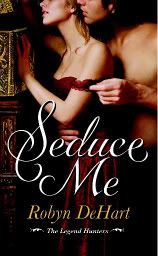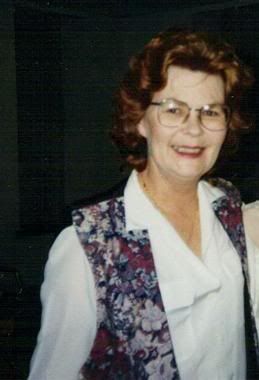
As you all know, there is an
ENORMOUS buzz on the blogosphere concerning Michelle Moran's newest book,
Cleopatra's Daughter and I am beyond excited that she has graced my blog with her presence!
Q: What prompted you to write a novel about Cleopatra’s daughter?
A: I do a great deal of traveling both for research and for fun, and most of my destinations are archaeological sites. On a trip to Alexandria in Egypt, I was afforded the amazing opportunity of participating in a dive to see the submerged remains of Cleopatra’s ancient city. More than ten thousand artifacts remain completely preserved underwater: sphinxes, amphorae, even the stones of the ancient palace. Although I'm not a fan of diving, it was an incredible experience, and it changed the way I looked at Cleopatra. I immediately wanted to know more about her life, and it was mere coincidence that my next trip took me to Italy, where her ten year-old children were brought to live after her suicide. While in Rome, I was able to retrace her daughter's steps, and upon seeing where her daughter had lived on the Palatine, I knew I had my next novel.
Q: What was it like to walk where Selene walked? In particular, what was it like to visit Octavian’s villa?
A: Unbelievable. For two thousand years, Octavian’s villa has sprawled across the top of the Palatine Hill, slowly deteriorating. At one time, its vibrantly painted dining room had hosted magnificent feasts, one of which would have been the celebration of the emperor’s triumph over Marc Antony and Cleopatra in Egypt. As the heir to Caesar, Octavian was determined to rule the western world without interference. He changed his name to Augustus, and with the help of his general Agrippa and his architect Vitruvius, he turned a city of clay into a city of marble.
I had known all of this on that day in March when the villa was opened for the first time in more than a century. What I hadn’t known, however, was just how unbelievable that trip back into the world of ancient Rome would be. After three million dollars in restoration, Italian archaeologists have been able to recreate not just the intimate library and studies Augustus used, but the mosaic floors he once walked on and the vividly painted ceilings he once walked beneath with Ovid, Seneca, Cicero, Horace, and even Julius Caesar himself. As we were quickly escorted through the frescoed rooms, we stopped in the triclinium – the dining room which had once seen so many famous faces smiling, laughing, even crying for mercy. With a little imagination, it was easy to see the tables and couches that had once adorned the chamber, and there was the undeniable feeling of standing in the presence of the ancients. It was the kind of feeling you only get in Grecian temples or Egyptian tombs.
Q: In all three of your novels, your narrators have been teenage girls. Is there are reason for this?
A: Actually, yes. I like to begin my novels during the time of greatest transition in a person’s life. And in the ancient world, the greatest transition in a woman’s life was often the time when she was married. Because women married at much younger ages two thousand years ago (twelve years old was not uncommon), my narrators have all been very young girls. In fact, Random House will be making a conceted effort to market Cleopatra's Daughter to young adults as well as adults. However, as my novels progress through time (my next book, for example, will be about Madame Tussaud), my narrators will be older.
Q: Is the Red Eagle based on an historical person?
A: Yes. The Red Eagle is actually based on several men who led slave rebellions (unsuccessfully, I might add) against Rome. Spartacus led the most famous revolt, but there were other men too, such as Salvius, who waged war with his army of slaves in ancient Sicily.
Q: You write in your acknowledgements page that the character of the Red Eagle is an homage to the works of several authors. What made you decide to do this?
A: Creative as well as personal reasons. First, I wanted to create a character that fans of swashbuckling adventures might love, and it wasn’t at all difficult to find historical personalities on which to base such a hero. Men like Spartacus and Salvius were heroes in the truest sense of the word. But I didn’t want there to be too much action, and certainly not so much that it would detract from the real story – that of Selene and her twin brother Alexander growing up in a foreign court. I could certainly have chosen not to include anything as obviously fictitious as the Red Eagle. But I wanted to illustrate just how threatening slave rebellions were at that time, and how ever-present the danger of becoming a slave would have been, even to captured royalty. And the creation of the Red Eagle wasn’t a huge stretch. Many rebels who came before – and after – the Red Eagle employed similar tactics: rousing the plebs, arming the slaves, and encouraging those in servitude to passive resistance.
On a more personal note, however, I wanted to include the Red Eagle because I knew it would be a character my father would have loved. He devoured anything having to do with ancient Rome, and I deeply regret not having written this while he was still alive.
Q: Was a third of Rome’s population really enslaved?
A: Sadly, yes. And you didn’t have to be born a slave to become one. You could be kidnapped and sold into slavery, your city could be overrun and you could be turned into a slave, or you might be sold into servitude by your own parents. Slavery meant an absolute loss of every human right we now take for granted, and as a slave, your body was no longer your own. Many slaves were physically and sexually abused, regardless of age or gender.
Q: Where did these slaves come from?
A: Many were Gallics and Greeks. The Gallics were from Gaul, a region which now encompasses France, Belgium, parts of Switzerland, and Germany.
Q: When did slavery end?
A: It hasn't. In the Western World, it was slowly - very slowly - phased out with the coming of Christianity (which was one of the reasons Christianity flourished… it appealed to the disenfranchised and enslaved, making everyone equal if not on earth than in the next life). But slavery certainly hasn't ended for everyone. There are women and children who are ensalved today, even in America and Europe. Of course, this isn't legal. Many of these victims of modern-day human trafficking have been brought over from places like Albania or Algeria and have no resources to escape. That's why organizations such as STOP International exist. You can visit them here.
Q: What resources did you use to write this novel?
A: I did most of my research on-site (in Rome, Alexandria) and in libraries. In order to describe the Palatine, I went there (not that this was necessary… but it was certainly fun!). To get a feel for life on Capri, my husband and I booked a week there and took several trips into the Blue Grotto (where you can no longer swim). I also used dozens of books and contacted scholars such as Duane W. Roller whose work on the life of Kleopatra Selene was invaluable to me.
Q: Why did you change Cleopatra Selene’s name to Selene in the novel?
A: I thought it would be nice (and easier for the reader) to differentiate Selene from her mother by calling her by her second name. Selene means moon, while her brother – Alexander Helios – was named after the sun. Very pretty, I think!
Q: Is it still possible to visit the places Selene visited when she was in Rome?
A: Yes. In 2008, I went on a photographic safari in search of the places Selene would have gone during the brief years she was in Rome. Many of the photos are included here!
Q: What are you working on next? Will it also be marketed to both adults and YA?
A: Actually, my next book will be firmly adult fiction. MASKS OF THE REVOLUTION is about Madame Tussaud, who joined the gilded but troubled court of Marie Antoinette, and survived the French Revolution only by creating death masks of the beheaded aristocracy. I’m very excited about this novel, since Marie (the first name of Madame Tussaud) met absolutely everyone, from Jefferson to the Empress Josephine.
Isn't she awesome?
Giveaway is over. Ended in 2009
I am so excited to also announce that she has extended her generosity to include being able to giveaway a
SIGNED copy of
Cleopatra's Daughter to
ONE lucky reader! I have read both Nerfertiti and The Heretic Queen, both of which are on my top books of all time list, and I know Cleopatra's Daughter will
NOT disappoint!
How to enter, well this time I am going to keep it super simple.
To enter? Simply leave a comment answering one of these questions:
If you could go back in time and live during a specific historical event, what would it be?
OR
How did you find my blog? :)
Following is not required, but I would recommend it because I will announce the winner on here and the winner will have 48 hours to contact me, I will NOT contact the winner.
If you want to earn extra entries:
Leave each in a seperate comment, if you don't, I will count these as ONE entry instead of the multiple entries that you did! Thanks~
These are only worth one extra entry:
post on Twitter @Historyslover this contest (leave link!)
Post this on your blog (leave link)
Giveaway ends on September 15th, 2009 at midnight. Winner will be announced on this blog. This IS an International contest, so doesn't matter where you live- it's open! (Hooray!)








